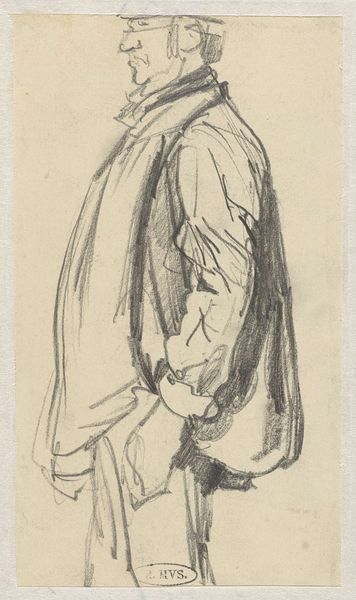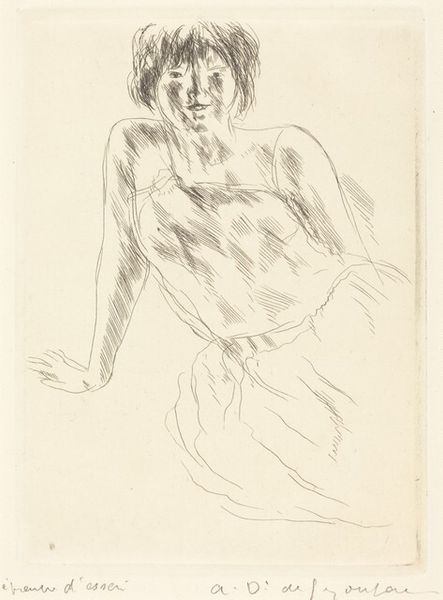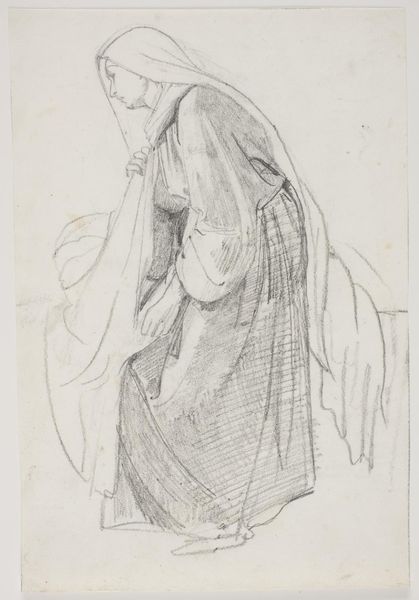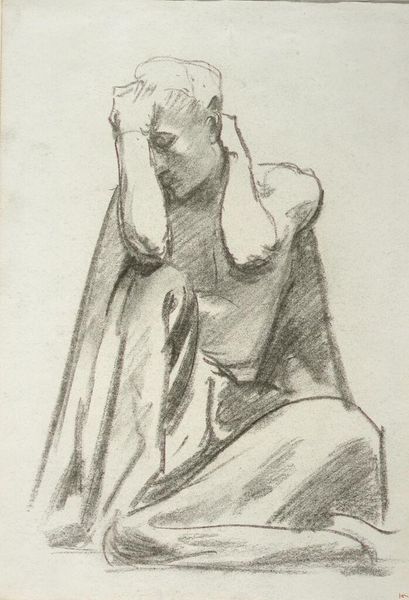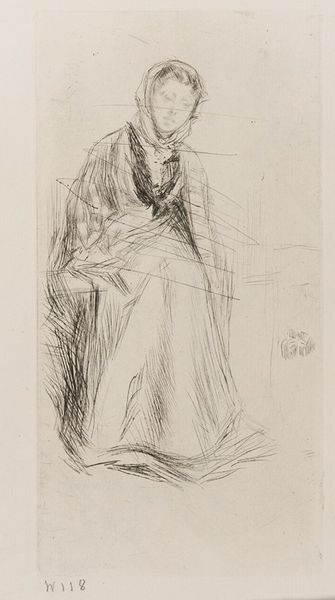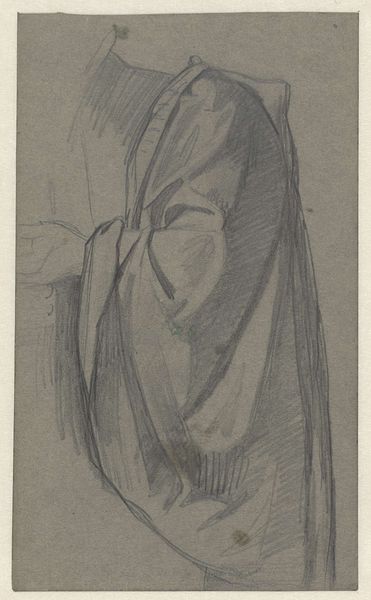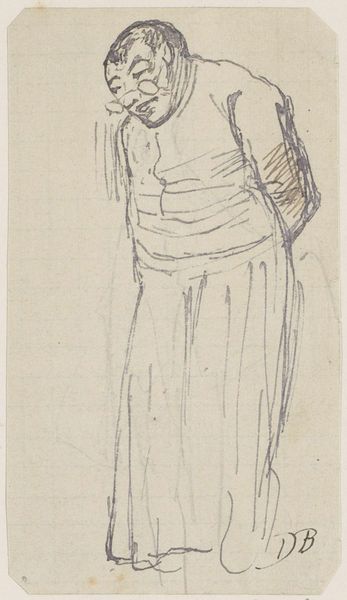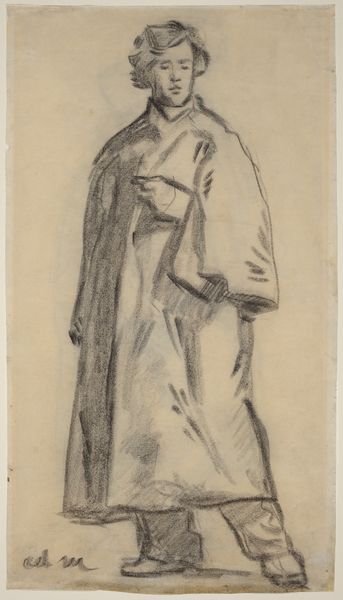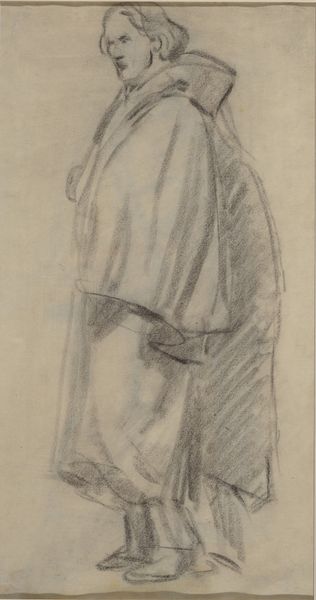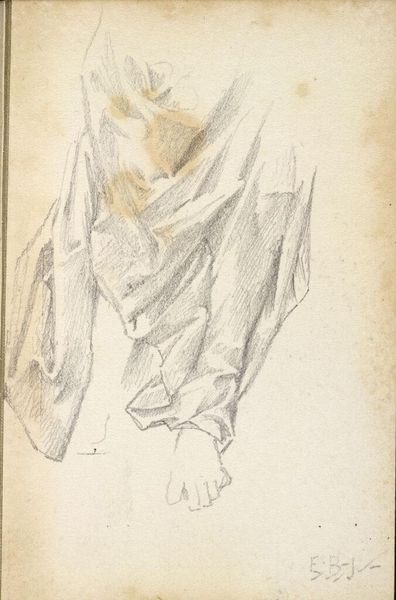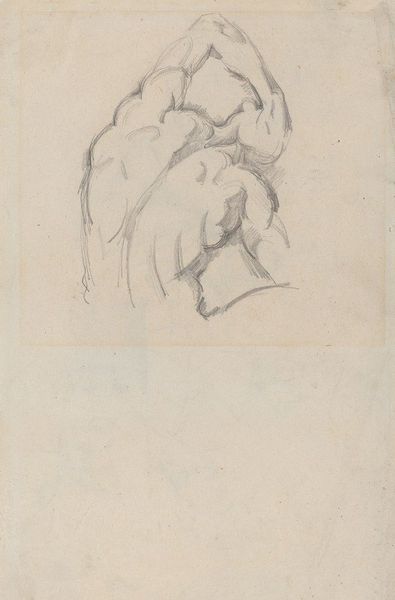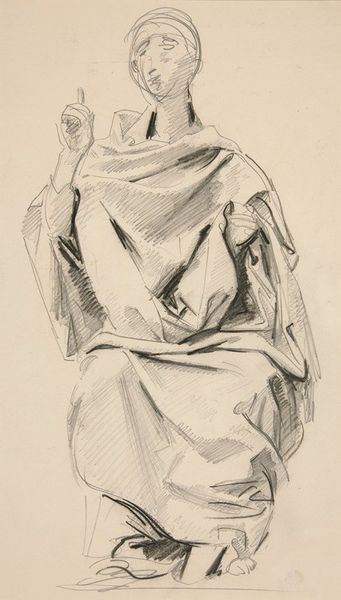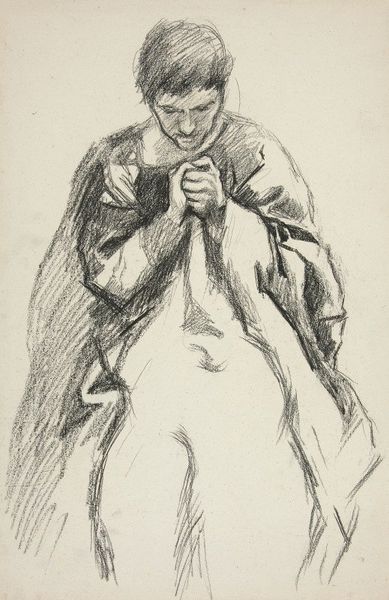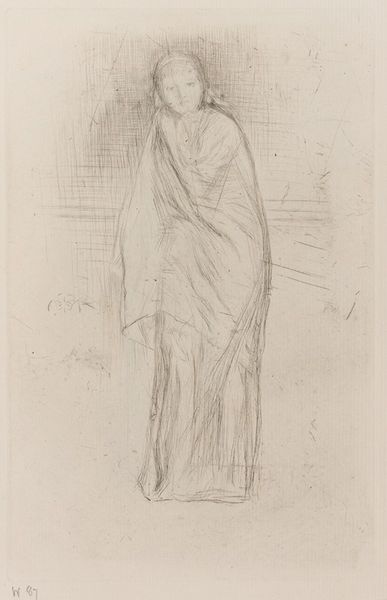
drawing, pencil
#
portrait
#
drawing
#
impressionism
#
figuration
#
pencil drawing
#
pencil
#
genre-painting
#
academic-art
#
realism
Copyright: Public Domain: Artvee
Editor: We’re looking at Jean-François Millet’s 1866 pencil drawing, “Study for ‘Bergere Assise.’” It’s quite a quick sketch, almost abstract. What do you see in this work, beyond a simple figure study? Curator: Well, considering Millet’s commitment to depicting rural life and labor, this “Study for ‘Bergere Assise’” is particularly interesting. While seemingly a simple preparatory sketch, we must also see it within the context of the art world at the time. Millet was, in effect, pushing back against the dominant academic artistic institutions, which favored historical or mythological subjects. Editor: How so? It seems quite a traditional subject, really. Curator: The sitter herself! While the wealthy were commissioning portraits in oil paint, Millet turned his attention to farm workers. Note the material roughness of the drawing medium itself: pencil on paper. This would never hang in the Salon as a finished work but still it exists, subtly making the argument for whose lives and stories mattered. Editor: That's a powerful point. The choice of subject is itself a political statement, defying what was deemed worthy of artistic representation at the time. Do you think his intended audience would recognize this subversion? Curator: I do. There was a growing awareness and sympathy among certain segments of society for the plight of the working class. Millet gave them dignity on a monumental scale when everyone else romanticized kings and queens. Editor: Seeing it that way really changes how I view this study. I had thought it was just practice. Curator: Indeed, art often operates on multiple levels. Now you can appreciate it more fully in context!
Comments
No comments
Be the first to comment and join the conversation on the ultimate creative platform.
